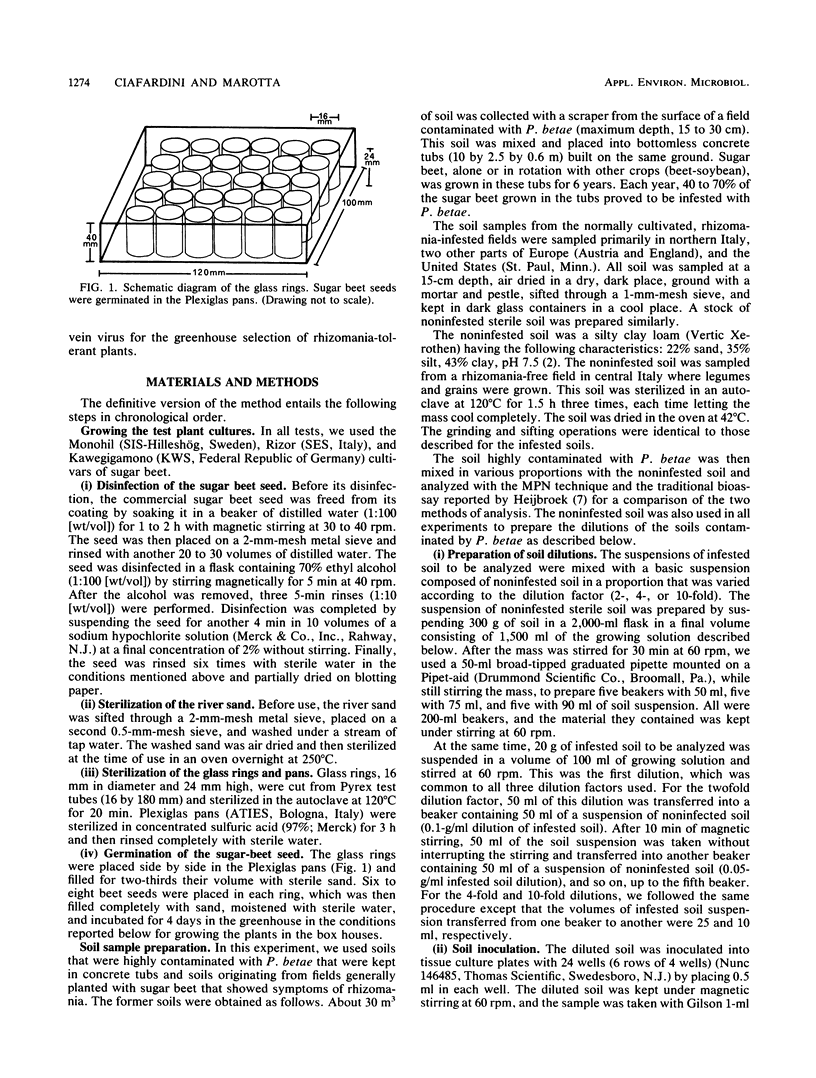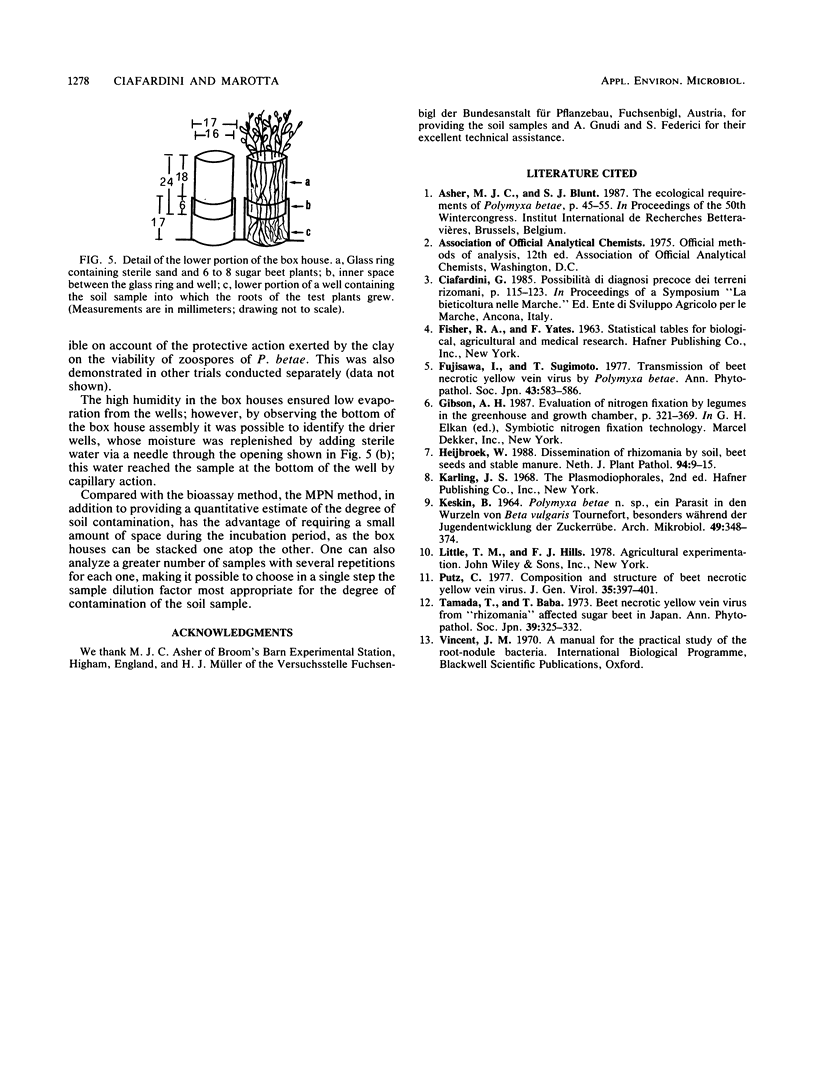Abstract
The fungus Polymyxa betae is an obligate parasite of the roots of many plants of the family Chenopodiaceae. In the sugar beet, it acts as a vector of beet necrotic yellow vein virus, the agent of a serious disease known as rhizomania. With indirect methods of analysis, such as bioassay, one can establish only the presence or absence, but not the quantity, of P. betae in soil. A new method based on the technique of the most probable number (MPN) of infective units of P. betae present in the soil was developed on the basis of the biological characteristics of this microorganism. Compared with traditional bioassay methods, the MPN method is suitable for determining the contamination level of P. betae in a soil, and it appears promising for the routine analysis of many soil samples, whether they were affected by rhizomania or presumed noninfested. The instrumentation designed especially for the recovery of viable P. betae from soil with the MPN technique is made from commercially available materials, results in a saving of space during sample incubation, and permits this method to be used for any laboratory analysis.
Full text
PDF





Selected References
These references are in PubMed. This may not be the complete list of references from this article.
- KESKIN B. POLYMYXA BETAE N. SP., EIN PARASIT IN DEN WURZELN VON BETA VULGARIS TOURNEFORT, BESONDERS WAEHREND DER JUGENDENTWICKLUNG DER ZUCKERRUEBE. Arch Mikrobiol. 1964 Nov 19;49:348–374. doi: 10.1007/BF00406857. [DOI] [PubMed] [Google Scholar]


